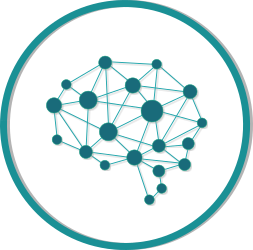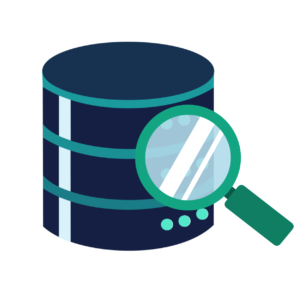
Artificial intelligence: an opportunity for my business?
ARTIFICIAL INTELLIGENCE: AN OPPORTUNITY FOR MY BUSINESS?
Artificial Intelligence is attracting the interest of many companies who see plenty of opportunities in it. If AI can create levers for growth and differentiation, companies do not all have the same level of maturity.
Besides this disparity regarding the knowledge of the field and its applications, we find many preconceived ideas, of which we have a small excerpt here: “AI is too complicated”, “artificial intelligence is for big groups”, “AI is only for digital companies”, “AI is not for me, I own a small company”…
To reply to these statements, we will quote Buddha, “everything is true and false at the same time”.
When we talk about artificial intelligence, we need to adopt a personalized approach and ready-made answers and other generalities cannot be taken as proof.
Before launching a project to integrate artificial intelligence, some questions must be asked. Thanks on our experience, we propose to address the topics we study when we begin a diagnostic phase with a client.
To put it simply, this stage breaks down into three steps:
- 1 : identification of a need
- 2 : diagnosis and evaluation of the data
- 3 : ask the question “can I meet my need by using the data?
Identify your needs to target relevant projects
Artificial Intelligence can be applied in many ways and can be used for lots of different purposes. However, although the applications are numerous, they will not all be relevant to your company.
Knowledge of the company and digitization of an expertise
Many companies want to integrate Artificial Intelligence, but why? Some people see AI as a miraculous solution to all the world’s problems. To answer simply, this is not true. Some problems cannot be solved with AI (lack of data, lack of hindsight, unanswered questions, existence of more efficient solutions, etc.). Others think they can acquire expertise instantly. From a lack of key skills on a given task, a company could achieve excellence through artificial intelligence. Again, this is mission impossible, unless an expert company wants to make its expertise accessible.
Knowing your company and its processes well will allow you to make sure you start off on the right foot and avoid any bias in judgment.
A process can be problematic (waste of time, lack of reliability, etc.) even if you have all the necessary expertise in-house. The human brain is limited in terms of data processing, AI much less so. The whole challenge of AI lies in digitizing real expertise. And to do this, artificial intelligence, if we mean machine learning, relies on a human knowledge base. But if this base is not mastered, biases will be integrated and the AI will make mistakes.
Identify your objectives as well as recurring and impactful problems
Before trying to solve a problem, you need to have part of the answer in-house: expertise.
But to ensure that you have this expertise, you need to know how to define the perimeter to which it applies. Indeed, if you have in your team an expert in logistics who is totally efficient, the contribution of AI will not be significant.
To maximize a return on investment, you have to pinpoint your weaknesses. Identifying the processes and other tasks that are dragging down your profitability and putting you at a competitive disadvantage is a decisive first step.
We can clearly identify two types of needs that we detail below.
Automation and optimization of traditional processes
Here we find all the processes already in place in your company. From supplying to customer delivery, through production, customer service or quality control, the processes are numerous.
By integrating AI, you can improve your performance on a specific task. This is what happened with our customer OOgarden. The packing assistant allows pickers to go faster while saving cardboard. A double hit.
Similarly, the solution for defects detection developed for Alprobotic has a double effect for its customer, a manufacturer of surgical implants. The technician in charge of visual inspection can use his expertise on other tasks and the overall quality of production has been made more reliable. This is killing two birds with one stone!
Business digitalization, levers and new services
In addition to traditional processes and activities, you are probably aware that the economy is going through a major digital transition. Many companies are developing new digital technologies to respond to current challenges.
Here too, artificial intelligence has a role to play, as long as you are at least a little visionary or well informed (competitive intelligence, advice from an AI expert…). Artificial intelligence allows you to create new digital services that meet new needs resulting from changes in your customers’ habits.
This is the case of our client Botanic for example. This French company started from several observations: the advice given by salespeople is not always accurate – they are not botanists but salespeople -, a plant that dies shortly after purchase leads to customer dissatisfaction and more and more Botanic customers own a smartphone. From these observations emerged a project: why not develop a plant recognition technology? This technology, accessible on cell phones, allows for reliable identification and gives customers tips on how to take care of their leafy friends. Customers are well advised, sellers sell and plants live. What more could you ask for?
Some data to value?
Any Artificial Intelligence technology is based on data. To start any AI project, you need to have data to exploit. Prior to AI, we must therefore address the issue of data, from the acquisition strategy to the structuring and preparation of the database.
The first question to ask is: do you have any raw data? This data can take different forms: text, images, videos, statistics, value statements, time series… And for each type of data, we find a multitude of formats (images can be RGB photos, infrared images, PDFs…). Not all of them will be usable in the same way and only an expert in artificial intelligence will be able to tell you if it is possible to do something with them.
For example, if you want to develop a visual recognition technology, you will need a database of images representing what you want to recognize, that goes without saying. It would have been difficult for us to develop the label recognition technology for Wineadvisor if their database only contained kittens.
When we diagnose a company, we analyze internal data samples. This way, we can judge the overall quality. This is a crucial step, without which it would be risky or impossible to commit to any performance.
However, you may well answer “no” to the initial question. In this case, you will need to put in place a data acquisition strategy. This data can be external and available or you can capture it yourself. Once again, a collaboration with a specialist will allow you to lay the foundations of a quality database and to anticipate any potential biases.
Is there a relationship between your data and your needs?
Let’s assume that you have identified areas of improvement for your company AND you have several types of data at your disposal!
All the conditions seem to be met to launch a promising AI project, but not so fast…
Remember what we said above? “Not all data will be exploitable in the same way”, that means that you have to succeed in matching the targeted problem with the available data to make the right technology emerge!
To develop pedestrian detection technology, you need to know what a pedestrian looks like. This is logical for humans, but it is also true for artificial intelligence. As we like to say: artificial intelligence is only a reflection of the intelligence of those who designed it.
If the data you have in your possession resonates with one of your issues, you have a project that seems quite relevant to your company.
In our experience, during the diagnostic phases we identify many projects for each company we work with. If some of them confirm previous feelings, others shake up the ideas of our clients who had not imagined certain technologies, yet based on their data and responding to an existing problem.
You now understand that before launching headlong into an AI project, it is necessary to understand it well and ask the right questions.
If we have detailed two essential dimensions that are the data and the definition of the need, they mark only the beginning of the innovation path. Further down the line, you will have to prioritize your projects to keep only the most impactful ones (we invite you to read our article on the dimensions of ROI). After these steps, you will finally enter the design and development of an AI solution
In the meantime, if you are asking yourself these questions and you need an informed opinion, feel free to get in touch with us!




